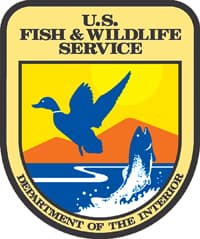California and Southern Oregon Awarded for State Endagered Species Conservation Efforts
OutdoorHub 07.09.13

The U.S. Fish and Wildlife Service today announced more than $13 million in grants to California and southern Oregon to help advance their collaborative efforts to conserve America’s rarest species. Twenty states will receive nearly $32 million in cooperative grants, providing vital support to efforts by partnering state wildlife agencies and conservation organizations to improve the health of the land and water that supports these species and scores of communities across the nation.
Issued through the Cooperative Endangered Species Conservation Fund (authorized by Section 6 of the Endangered Species Act), these competitive grants enable states to work with private landowners, conservation groups and other government agencies to initiate conservation planning efforts and acquire and protect habitat that benefits threatened and endangered fish, wildlife and plants.
“Our nation’s most effective conservation efforts are partnerships in which federal, state and local governments work hand-in-hand with private landowners and other stakeholders,” said Secretary of the Interior Sally Jewell. “The cooperative grants announced today will make it possible to build these voluntary partnerships to conserve the vital habitat of diverse threatened and endangered species. In addition, many of these partnerships provide direct benefits to people, such as improving water quality and supporting jobs and economic growth.”
“Private landowners play a vital role in conserving our most imperiled species, but they need our help,” said U.S. Fish and Wildlife Service Director Dan Ashe. “These grants provide a lifeline to species on the brink by fostering partnerships between federal, state and local governments, private organizations, and individuals, empowering them to develop creative solutions that drive critical conservation and recovery efforts.”
The grant funding is provided through programs established to help advance creative partnerships for the recovery of imperiled species. This year, the fund will allocate approximately $8 million in grants through the Habitat Conservation Planning Assistance Grants Program; $14.2 million through the Habitat Conservation Plan Land Acquisition Grants Program, and $9.4 million through the Recovery Land Acquisition Grants Program.
Habitat Conservation Plans (HCPs) are agreements between a landowner and the Service that allow a landowner to undertake otherwise lawful activities on their property, even if they may impact listed species. In return, the landowner agrees to conservation measures designed to minimize and mitigate the impact of those actions. HCPs may also be developed by a county or state to cover certain activities of all landowners within their jurisdiction and may address multiple species.
Under the HCP Land Acquisition Grants Program, the Service provides grants to states or territories for land acquisitions that complement the conservation objectives of approved HCPs.
For example, a $3 million grant will result in the acquisition of up to 3,114 acres that will greatly enhance the existing Coachella Valley Multiple Species Habitat Conservation Plan by securing key regional wildlife linkages, sand transport areas, and preserving core habitat areas. The land acquisition will benefit 20 species, including federally listed species such as the Coachella Valley fringe-toed lizard, desert tortoise, and peninsular bighorn sheep. The acquisition will complement and greatly enhance the ecological value of the many other acquisitions that have previously occurred in these areas in the last few years.
The HCP Planning Assistance Grants Program provides grants to states and territories to support the development of HCPs through funding of baseline surveys and inventories, document preparation, outreach and similar planning activities.
For example, California will use a grant of $410,818 to support the development of an HCP for the Sacramento-San Joaquin Bay-Delta Region. The delta is the largest estuary on the West Coast and supports 750 plant and animal species, 126 of which are sensitive or listed as threatened or endangered. The delta is also critical to California’s economy, as it serves as the “hub” of the State’s water infrastructure, supplying drinking water for two-thirds of Californians and irrigation water for over 7 million acres of highly productive agricultural lands. The Bay Delta HCP is being developed as a long-term comprehensive plan that will conserve and manage key species and natural communities in perpetuity while providing reliable water supplies for the State’s myriad uses.
The Recovery Land Acquisition Grants Program provides funds to states and territories to acquire habitat for endangered and threatened species with approved recovery plans. Habitat acquisition to secure long term protection is often an essential element of a comprehensive recovery effort for a listed species.
One of this year’s grants will provide $355,719 to enable the State of Oregon to acquire a conservation easement on the JaCox Ranch that will permanently transfer water rights to instream flow in order to restore year-round hydrologic connectivity to Sevenmile Creek. This project will also increase lake levels and improve access to cold-water springs and wetland refugial habitats during the late summer period for the protection of endangered Lost River and shortnose sucker. This acquisition will provide benefits to multiple other species in the middle and lower reaches of the Klamath River basin including lamprey, Chinook and the federally listed coho salmon.
A complete list of the 2013 grant awards under these programs (Catalog of Federal Domestic Assistance Number 15.615) is available online at: www.fws.gov/endangered/grants/index.html.

